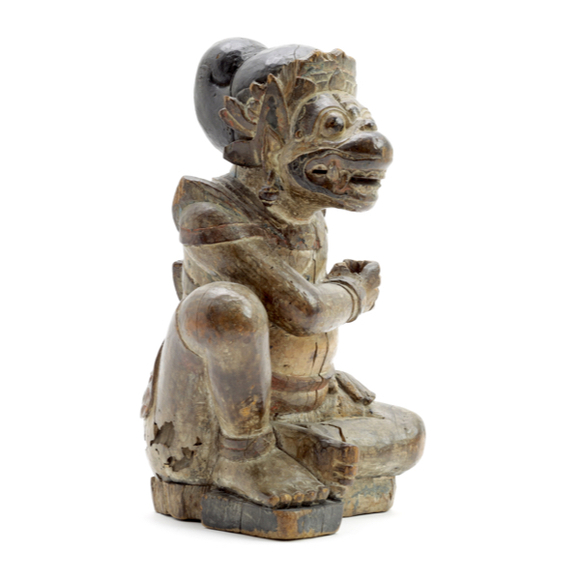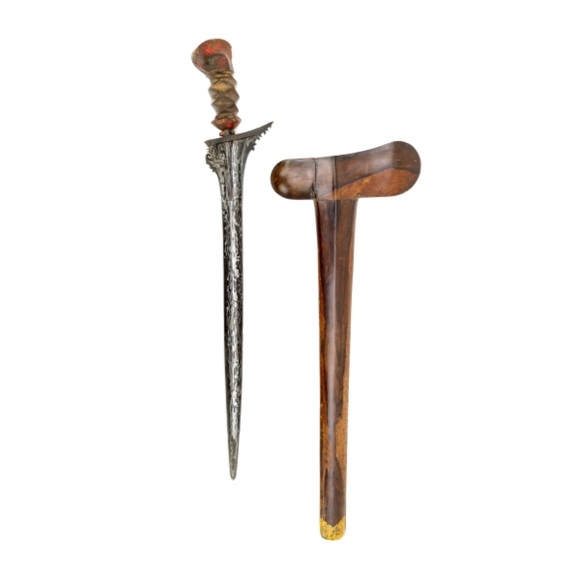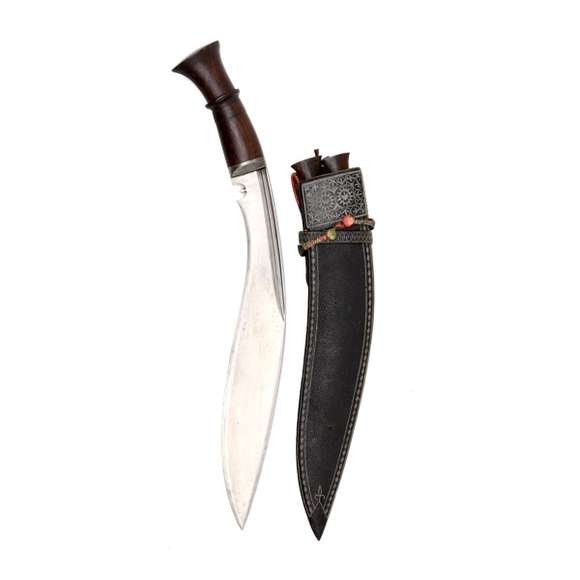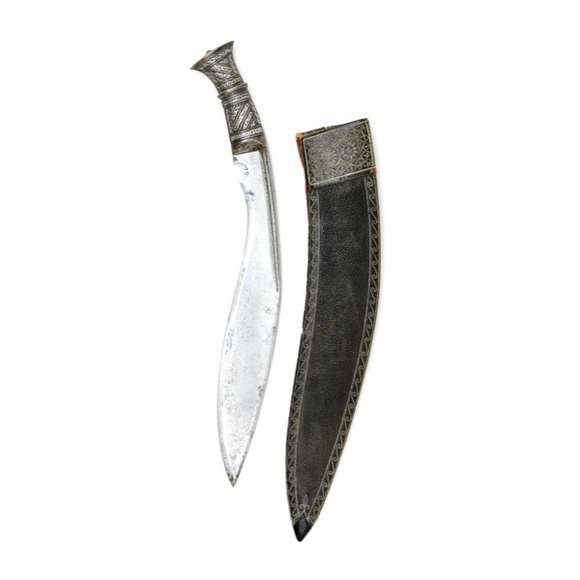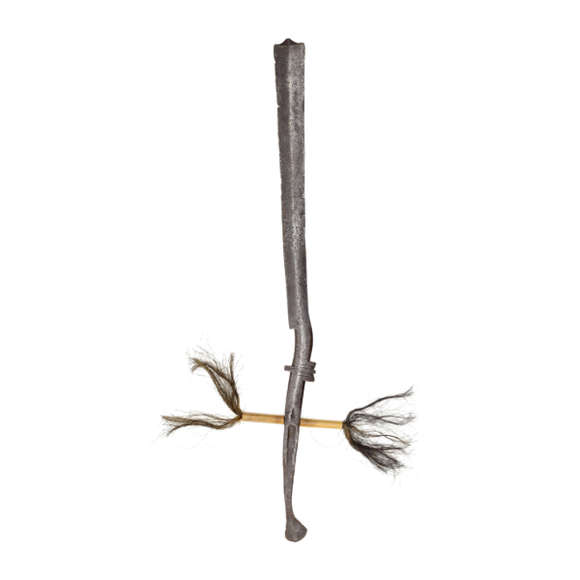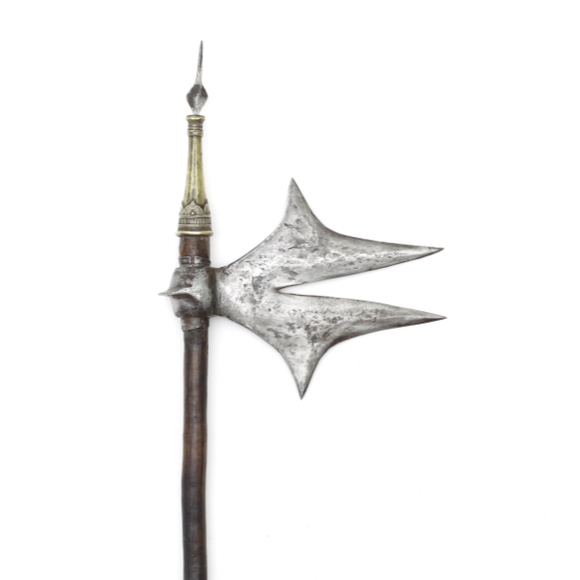A charming Balinese keris holder in the form of Hanuman, the brave monkey king.

54.9 cm
43.2 cm
Base 14 mm
Middle 4 mm
5 cm from tip 3.5 mm
At ganja 91 mm
Middle 27 mm
5 cm from tip 15.5 mm
391 grams
Iron, nickel, silver, glass, wood
Bali, Indonesia
19th century
Robert Hales
Introduction
Buntel mayat is a form of pamor (blade patterning) of a keris that consists of a spiral-wrapped blade without center plate. The word buntel means wrapping in Javanese, and mayat means slanting or sloping.1
It has sometimes erroneously been translated as "wrapped corpse", as mayit means "corpse" in Indonesian. However, the term is in Javanese, where mayat actually has positive connotations. Be that as it may, the pattern is respected and feared by Indonesians for being the most powerful, which is thought to be able to make or break a person depending on whether they are strong enough.
This being a Balinese keris, the proper Balinese term is tambangan which means "thick rope". In East-Java and Madura it is called sampur gading; "ivory white scarf".2
Notes
1. Singgih Wibisono, Stuart O. Robson; Javanese English Dictionary. Tuttle Publishing, 2002.
2. Ron van den Bos, personal communication. His sources: Emile van Veenendaal; Pamoratlas, 2006, and "Indonesisch-Nederlands Woordenboek”, KITLV Uitgeverij, Leiden 2009.
This example
A fine old Balinese keris. The straight blade shows the twisted tambangan pamor with bright silver lines of nickel and blackened iron. The blade surface is polished to a very smooth finish, typical or Balinese work. It retains this beautiful, original finish very nicely.
The wooden grip is in a style called danganan bebondolan.1 The wood is painted with dark brown cloud shapes, possibly simulating the prized kayu pelet wood. It has a small silver selut (collar piece) with glass beads.
No scabbard.
Provenance
This keris had an interesting provenance; it was purchased by no less than Robert Hales in Bali in 1972. I purchased it directly from him.
Notes
1. Pande Wayan Suteja Neka & Basuki Teguh Yuwono; Keris Bali Bersejarah. Neka Art Museum, Ubud, Bali. 2010. Page 132.












An understated, elegant khukuri of substantial proportions with fine layered blade.
With iron, silver overlaid hilt. Its associated scabbard features fine quillwork.
This peculiar sword was used by the Garo people of Assam for fighting, clearing the jungle, and animal…

